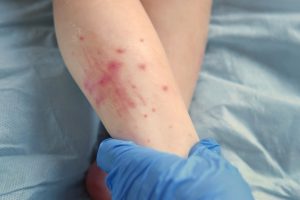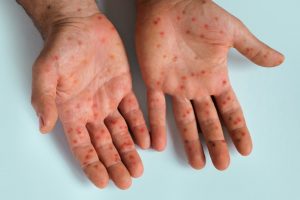A team of scientists at The National Institute for Communicable Diseases (NICD) released a *preprint of a paper on March 9th, 2021 entitled “Increased mortality among individuals hospitalised with COVID-19 during the second wave in South Africa.”
When a second wave of infections swept across the globe, most countries reported a rise in cases, but a lower case-fatality risk (CFR). The outcomes evoked a sense of cautious optimism, that can in part be attributed to better patient treatment, increased testing capacity and improved preparedness of health care systems. When the second wave hit South Africa, peaking in January 2021, the new variant (SARS-CoV-2 501Y.V2) was identified as the leading contributor of the rapid rise in infections. Although the severity of 501Y.V2 is yet to be determined, some data do suggest increased transmissibility between individuals.
In an effort to understand the rate of mortality during the second wave, NICD scientists analysed data from DATCOV, a National Hospital Surveillance System that enabled public and private hospitals to submit data on all COVID-19 hospital admissions. The team compared in-hospital mortality, and other patient characteristics between the first and second waves of COVID-19.
The study revealed that in-hospital mortality increased with more patients being admitted for COVID-19. It furthermore showed that in-hospital case fatality-risk (CFR) increased from 17.9% in the weeks of low COVID-19 admission numbers (<3,500 admissions) to 29.6% in the weeks of very high occupancy. Importantly, even after accounting for the effects of the increased load of COVID-19 hospital patients, there was an additional 20% risk of in-hospital mortality (in the second wave) which could possibly be related to the new variant.
The data ultimately suggests that the 501Y.V2 lineage may be associated with higher in-hospital mortality compared to old lineages. However, the data should be interpreted with caution as the team did not have individual level data on who was infected with the new or old lineages. And other factors could have changed from the first to the second wave period. Individual level studies, comparing the outcomes of those with and without the new lineage, based on sequencing data, is needed.
In essence, to prevent increased mortality in a potential third wave, a combination of strategies is required to slow the transmission pace of SARS-CoV-2, to help flatten the peak of the epidemic. This will relieve pressure on our healthcare systems and enable hospitals to prepare for surge capacity (thereby avoiding breaching capacity), with the hopes of decreased mortality figures.
*Please note this is a preprint and will undergo a peer-review process.





